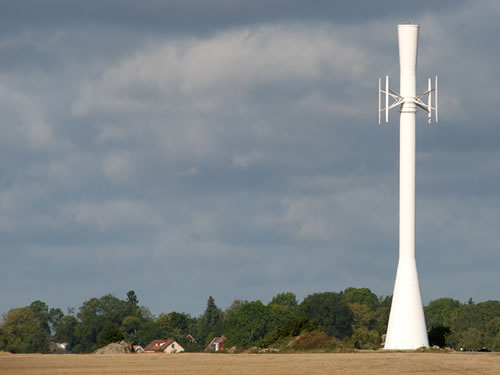Record-Speed Last-Mile Wireless Data Bridge Demonstrated
Researchers have developed a technology that could be used for "last mile" requirements to provide high-speed digital communications in terrain that would normally not be suited for broadband installations.
The "wireless bridge" connecting two fiber-optic links ran at 220 GHz and achieved a bandwidth of up to 20 billion bits of data per second, which translates to about 18.6 Gbps.
"Instead of investing in the cost of digging trenches in the ground and deploying ducts for the fibers, data is transmitted via the air—over a high-speed wireless link," said Swen Koenig, a researcher at Karlsruhe Institute of Technology's (KIT) Institute of Photonics and Quantum Electronics, who will present the findings at the Optical Fiber Communication Conference and Exposition/National Fiber Optic Engineers Conference, which takes place in Los Angeles from March 4-8. Koenig said that wireless technology is an "inexpensive, flexible, and easy-to-implement solution" for the last mile problem.
In their test setup, the researchers converted an optical signal to an electronic signal and encoded it to be transferred via a 220 GHz radio frequency carrier. The modulated carrier is connected to the antenna which "radiates" the signal and enables the receiving wireless gateway to capture the signal. First experiments succeeded over a distance of just 50 centimeters and later over a distance of 20 meters, about 66 feet. The researchers believe that the range will eventually reach about 20 km, or about 65,600 feet.
Get Tom's Hardware's best news and in-depth reviews, straight to your inbox.

Douglas Perry was a freelance writer for Tom's Hardware covering semiconductors, storage technology, quantum computing, and processor power delivery. He has authored several books and is currently an editor for The Oregonian/OregonLive.
-
A Bad Day "Koenig said that wireless technology is an "inexpensive, flexible, and easy-to-implement solution" for the last mile problem."Reply
Elsewhere, in an ISP company...
"We have a monopoly over this area! Why should we invest in our infrastructure and not in more yachts?!" -
palladin9479 This tech will most likely be using directional antennas. You can get a 802.11g signal to go 2km+ using a pringles can and some sort of sighting system. It's very sensitive to getting both ends pointed directly at each other, but otherwise a great way to defeat the inverse square law.Reply -
shin0bi272 220ghz = 18.6gb/s @ 50cm ?Reply
what will the ghz have to be to keep that speed over the distance of 20km? Were gonna be talking terahertz range arent we? -
jhansonxi As a last-mile link it will probably be omni-directional. The high frequency will limit reception to line-of-sight. The paper indicated 1km is feasible with attenuation from heavy rain.Reply
But I don't see it as really helpful for last-mile connections. If you're going to pull fiber, there is little reason to not go the final mile unless there is some major building structural problems that prevent it.
However, this would make a great WiFi replacement. -
zodiacfml 220 GHz? that's insane microwave frequencies which could work at 20km distance.......in a vacuum!Reply
As posted above, 1km could be possible accounting rain and other factors. -
beetlejuicegr rofl will we boil our brains while we pass near it i guess? On another news new microwave tank built at USA :P (Command and conquer style lol)Reply -
warmon6 shin0bi272220ghz = 18.6gb/s @ 50cm ? what will the ghz have to be to keep that speed over the distance of 20km? Were gonna be talking terahertz range arent we?Reply
You need to look at the other direction for Hz and Range.
The lower the Hz, the farther it can go farther on the same power (or at least isn't hampered with objects as bad).
Higher Hz = shorter range and is blocked by objects far more easily.
Best way to view this is either try a 2.4/5 Ghz router or drive as far as you can on your favorite FM and AM radio stations.
The only reason why i could see them using 220Ghz (besides what the FCC will allow) is that what is needed to push that kind of bandwidth (High Hz = more bandwidth for data) -
dalethepcman This could really improve competition in the ISP field. It is much easier to lease a small piece of someone's roof than it is to get permits to dig up every street in a 1km radius to lay your own coax/telephone/fiber lines.Reply
